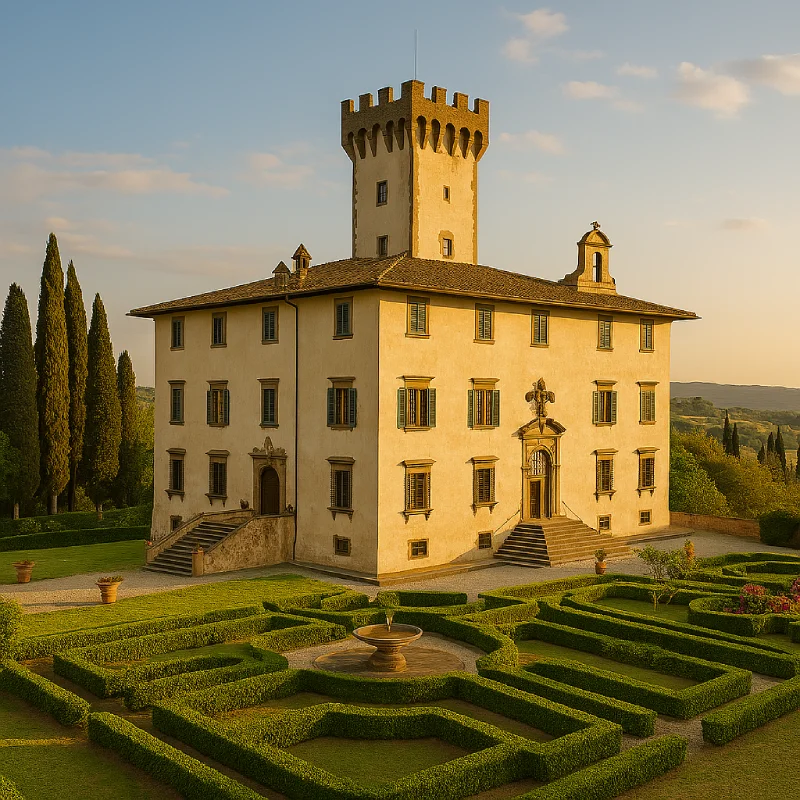Medici’s Tuscany: A Journey Through History, Villas, and Gardens

Tuscany is not just a land of rolling hills, art, and fine food—it’s also the birthplace of the European Renaissance. At the heart of this cultural explosion is the Medici family: bankers, patrons, popes, and grand dukes. Their legacy shaped the region through a network of villas and gardens that remain stunning examples of harmony between nature, architecture, and power. This article is a journey through the Medici’s Tuscany, where you’ll explore grand estates, symbolic gardens, and the places where history was written. The Origins of the Medici Villas: Power, Culture, and the Land The earliest Medici villas, built between the 14th and 15th centuries, were primarily agricultural and defensive in function. Among the oldest are: As Cosimo the Elder and later Lorenzo the Magnificent rose to prominence, these properties became cultural centers and retreats. The Villa of Careggi hosted the Platonic Academy, gathering great thinkers like Marsilio Ficino and Pico della Mirandola. These villas symbolized not only the Medici’s wealth, but their intellectual and artistic influence, offering a perfect balance between leisure, culture, and politics. Architectural Evolution and the Birth of the Italian Garden In the 16th century, with Cosimo I de’ Medici’s reign, villas took on a new, more representational and aesthetic purpose. Architectural masterpieces emerged: These villas were no longer just residences—they were instruments of statecraft and visual expressions of Medici ideals. Gardens became political spaces, symbolizing order, beauty, and dominion over nature. Iconic Medici Gardens The UNESCO Medici Villas and Gardens In 2013, UNESCO recognized 12 Medici villas and 2 gardens as World Heritage Sites. They represent “an outstanding example of how Renaissance architecture and landscape design reflect social and political aspirations.” Highlights of the Medici Heritage: 1. Villa di Poggio a Caiano A true Renaissance gem with frescoes by Pontormo and a balanced, airy design. It was later used by the Lorraines and the Savoy family. 2. Villa La Petraia Overlooking Florence, this villa features a glass-covered courtyard and stunning frescoes. 3. Villa di Castello A prototype for formal Italian gardens, combining art, science, and Medici ideology. 4. Villa di Cerreto Guidi A former hunting lodge, now home to the Museum of Hunting and Territory. 5. Villa La Magia (Quarrata) A lesser-known but captivating villa, now used for cultural events. 6. Villa Medici in Fiesole One of the first villas created purely for leisure, with breathtaking views and refined architecture. 7. Villa di Artimino (La Ferdinanda) Nicknamed the “Villa of the Hundred Chimneys,” built for Ferdinando I de’ Medici. Gardens, Mythology, and Political Symbolism Medici gardens were not merely decorative. Each statue, grotto, and fountain carried mythological and political symbolism: These landscapes created a visual narrative of power, where walking through a garden was like reading a book about Medici greatness. How to Explore the Medici Villas Today Many of the Medici villas and gardens are now open to the public, often hosting exhibitions, cultural events, and guided tours. Itinerary Tips: Must-see Experiences: Discover Medici’s Tuscany with Tuscany Private Tours If you want to explore Medici heritage in Tuscany in depth, comfortably, and with expert insight, a private tour is the best way to do it. With Tuscany Private Tours, the private driver and guided tour service by Maurizio Bellini, you can: Book now at tuscanyprivatetours.net and dive into a world of power, art, and nature in Medici Tuscany.
